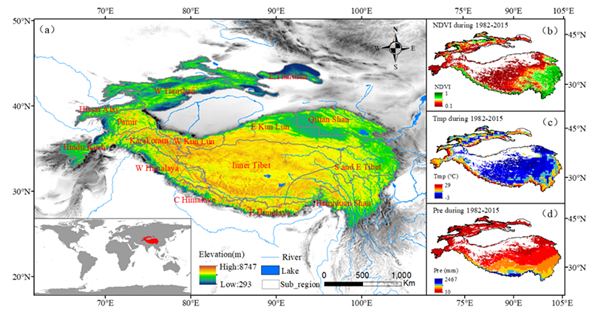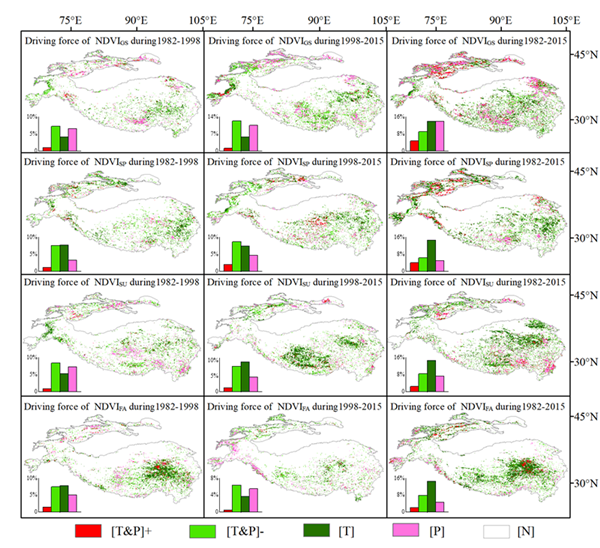Study Reveals the Driving Mechanism of Vegetation Dynamic Change in High Mountain Asia
2021-09-17
Remote sensing and ground vegetation observation data show that climate warming promotes global vegetation greening, and the increase in air temperature in High Mountain Asia(HMA) is more than twice the global average.
Under such drastic warming in climate, how have the vegetation dynamics in HMA changed? In response to this scientific problem, researchers of Xinjiang Institute of ecology and geography, Chinese Academy of Sciences, used the latest vegetation to investigate the vegetation dynamics in HMA and quantify the contribution of climate change to vegetation dynamics.
The research results show that over the past 30 years, HMA has generally followed a “warm-wet” trend, with temperatures charting a continuous rise. During 1982-1998 precipitation increased (1.16 mm yr-1), but depicted to reverse since 1998 (-2.73 mm yr-1). Meanwhile, the NDVI in HMA increased (0.012 per decade) prior to 1998, after which the trend reversed and declined (-0.005 per decade). The main reason for the browning of HMA vegetation is the dual effects of warming and precipitation changes. Climate change is the primary factor driving these vegetation and water dynamics, with the largest proportion reaching 41.9%.
The results are published in Scientific Reports. Article link:https://www.nature.com/articles/s41598-021-97240-4

Fig. 1 Study area.

Fig. 2 Spatial distribution of climate factors significantly affecting vegetation dynamics in HMA.
Contact: LIU Jie, Xinjiang Institute of Ecology and Geography
E-mail: liujie@ms.xjb.ac.cn



